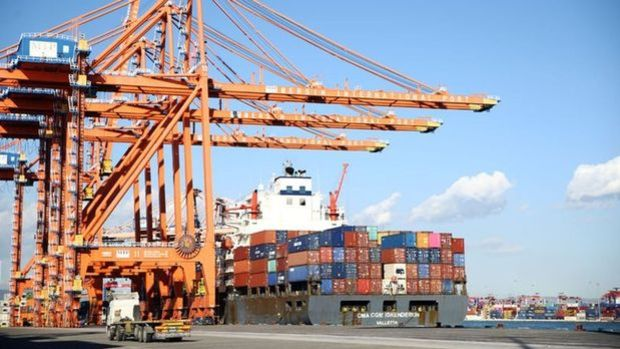The decline in export climate continued
ISO Turkey Manufacturing Sector Export Climate Index remained below the threshold value at 49.0 in September The Istanbul Chamber of Industry (ISO) Turkey Manufacturing Sector Export Climate Index remained below the threshold value of 50.0 and was realized as 49.0 in September 2023. The index, which remained below the threshold value in August, was realized as 49.1. General demand conditions in Turkish manufacturers' export markets deteriorated for the second month in a row in September, especially due to the weakness in Europe. The weakening in the export climate was largely due to the decrease in demand from Europe. Economic activity in Germany, the United Kingdom, Italy and France, the four largest export markets of Turkish manufacturers in Europe, decreased in September. Economic activity in the US continued to expand at the end of the third quarter. Production showed a very limited increase as in August. Demand in the Middle East, on the other hand, remained generally vibrant. The September 2023 results of the Istanbul Chamber of Industry (ISO) Turkey Manufacturing Sector Export Climate Index, which measures the operating conditions of the Turkish manufacturing sector in its main export markets, have been announced. All figures measured above the threshold value of 50.0 in the index indicate improvement in the export climate, while values below 50 indicate deterioration. The Istanbul Chamber of Industry Turkey Manufacturing Sector Export Climate Index remained below the threshold value of 50.0 in September and stood at 49.0. The Istanbul Chamber of Industry Turkey Manufacturing Sector Export Climate Index, which was 49.1 in August, decreased to 49.0 in September, remaining below the threshold value of 50.0 for two months in a row. Demand from Europe decreased The general demand conditions in Turkish manufacturers' export markets deteriorated for two months in a row in September, especially due to weakness in Europe. While the center of growth was again the Middle East and India, demand conditions in the US were generally stable at the end of the third quarter. The deterioration in demand conditions in export markets remained very similar to the previous month. The weakening in the export climate was largely due to the decrease in demand from Europe. Economic activity in Germany, the United Kingdom, Italy and France, the four largest export markets for Turkish manufacturers in Europe, decreased in September. These markets account for approximately 23 percent of Turkish manufacturing industry exports in total. When looking at other countries in Europe, production decreased in the Netherlands, Austria, Poland and the Czech Republic. Growth in Spain, Ireland and Greece was relatively positive. Demand remained vibrant in the Middle East On the other hand, economic activity in the US continued to expand at the end of the third quarter. Production increased only slightly, as in August. Demand generally remained vibrant in the Middle East. While growth accelerated in the United Arab Emirates (UAE) and Saudi Arabia, economic activity also increased significantly in Qatar. Production decreased in Egypt and Lebanon. Excluding the Middle East, the fastest expansion among the countries monitored within the scope of the survey was measured in India. Growth in this country was very similar to the previous month and remained strong. There were differences in the performances of other BRIC countries. While production continued to increase significantly in Russia, growth in China fell to its lowest level in the last nine months. Economic activity in Brazil started to decline again after a slight increase in August. Although this decline was slight, it was the most significant in the last two and a half years. Andrew Harker, Economic Director of S&P Global Market Intelligence, commented on the Istanbul Chamber of Industry’s Turkey Export Climate Index: “Economic weakness in Europe continued to pose a challenge for Turkish manufacturers in September and limited the options available to companies in terms of sales to foreign markets as the third quarter came to an end. In addition, the UAE was again the main source of demand growth among key export markets as growth in the US moderated. Economic activity in Russia also maintained its resilient outlook.”


